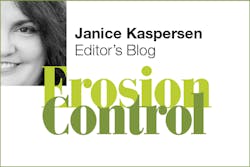
Fertilizers. Insecticides. Fungicides. These are some of the many substances—collectively known as agrochemicals—farmers apply to crops to increase production and prevent losses. They’re necessary, if at times potentially overapplied, but there is increasing concern about where they eventually end up and what effect they’re having on groundwater and surface water, especially on potential drinking water sources.
The chemicals themselves and the by-products left as they break down in the environment have caused the shutdown of wells in several European countries. The situation has spurred calls for new regulation throughout the EU. But it’s hard to regulate what we don’t understand, and tracing the chemicals and determining how fast they move through soils and how quickly they might reach various water sources has been difficult and time-consuming.
A recent study by scientists at Aarhus University in Denmark has been able to accurately predict the chemicals’ movement, and to do so in a way that’s affordable and easy enough that it just might get widespread use.
Researchers used visible and near-infrared spectroscopy to look at the texture and structure of the soils, then used that information to predict the path of various dissolved chemicals. The same result can be achieved in the lab by measuring so-called breakthrough curves—that is, applying a dissolved chemical onto the soil’s surface and measuring how long it takes for the solution to reach the bottom of the sample—but that takes time and is expensive. The new method is fast, cheap, and nearly as accurate.
As this article on the process notes, soil properties such as texture and the amounts of organic matter, carbonates, and metal oxides it contains all influence how fast different solutes move through it, as do climate and the agricultural practices themselves. Soil can potentially filter or retain many substances, but depending on all these different factors, it can also create pathways that allow the chemicals to pass through rapidly to reach groundwater or nearby surface waters.
One of the researchers notes, “We found that we could measure the mass transport of dissolved chemicals quite accurately with vis-NIR spectroscopy. Our findings can pave the way for next-generation measurements and monitoring of dissolved chemical transport by spectroscopy.”
Western Water Summit Call for Speakers Is Open
The Western Water Summit will take place from January 22–23, 2019, in San Diego, CA. It focuses on all facets of water management: groundwater, surface water, wastewater, drinking water, irrigation, water law, reuse, generation, restoration, conservation and efficiency, and erosion and sedimentation. The Call for Speakers is open until November 1. Find more information about the conference tracks and registration at www.westernwatersummit.com.
About the Author
Janice Kaspersen
Janice Kaspersen is the former editor of Erosion Control and Stormwater magazines.

